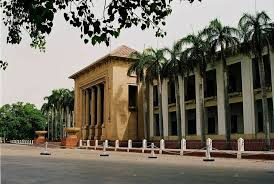By prioritising law enforcement over livelihoods, and control over care, the government’s fiscal message is clear: this budget is about governing unrest, not fixing its roots

LAHORE, June 26 — In a move that has sparked sharp reactions from economists and rights observers alike, the Punjab government has earmarked a record-breaking Rs300 billion for law and order in its Rs3.9 trillion budget for FY2025–26 — a 131% increase over last year. This dramatic rise outpaces allocations for health, education, agriculture, and climate resilience combined, raising concerns that control has taken precedence over citizen relief amid a paralysing economic slowdown.
While officials describe the budget as “development-oriented,” its spending priorities tell a different story. With inflation soaring at 17.3%, wheat yields falling, and joblessness climbing, the government has chosen to bolster its coercive apparatus instead of easing economic pain.
Relief for Citizens Left Off the Table
In the face of severe inflation and stagnating industrial growth, the budget fails to introduce any direct relief for low- and middle-income households. There are no utility subsidies, no food support programs, and no price-control interventions, despite rising electricity costs and shrinking household incomes. Instead, the province plans to raise Rs236 billion through non-tax revenues, which includes higher service charges and fines—transferring the burden of budget balancing onto already strained citizens.
Industry Ignores, Unemployment Unaddressed
Industrial output across Punjab’s textile and manufacturing hubs continues to decline due to high input costs, load-shedding, and low consumer demand. Yet the budget includes no new energy support, no tax reliefs, and no stimulus for SMEs. With unemployment at 8.5%—and much higher among the youth—the lack of job creation measures stands out starkly.
Agriculture Support May Backfire in Dry Regions
Punjab’s agriculture sector, already battered by climate volatility and high input costs, receives Rs129.8 billion, mostly for tube well solarisation, mechanisation, and interest-free loans. But experts warn that promoting solar tube wells without groundwater regulation could trigger over-extraction, especially in arid regions where groundwater is brackish and unfit for crops.
In addition, there are no allocations for treating industrial or urban waste, which continues to pollute Punjab’s soils and water bodies. Critically, the budget fails to invest in climate-resilient seed development, crop insurance, or agricultural research, leaving farmers vulnerable to the next shock.
South Punjab Left Behind Again
Despite claims of balanced development, South Punjab remains conspicuously neglected in the FY2025–26 budget. According to the MICS 2022–23 survey, only 58% of households in DG Khan have access to safe drinking water, and poverty levels in several southern districts are more than double the provincial average. Literacy rates in Rajanpur and DG Khan remain below 50%, highlighting the persistent human development gap. Yet, the budget offers no ring-fenced allocations or targeted uplift programs to address these disparities. In stark contrast, urban centres like Lahore and Rawalpindi continue to absorb the lion’s share of infrastructure funds, including allocations for expressways, mass transit systems, and urban beautification—widening the gulf between the provincial core and its peripheries.
Control over Relief
The unprecedented rise in law and order spending is not occurring in a vacuum. It coincides with a wave of legal amendments expanding police powers, including pre-emptive detentions, crackdowns on protest, and enhanced digital surveillance.
Political analysts argue this is a calculated response to a legitimacy crisis driven by electoral manipulation, economic hardship, and regional grievances. Rather than reaching out with relief, the government appears to be tightening its grip through force.
 Radio News Network Radio News Network
Radio News Network Radio News Network
